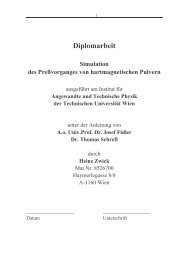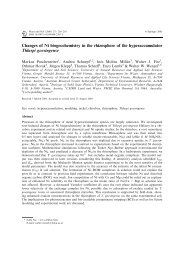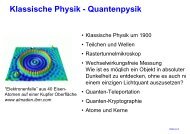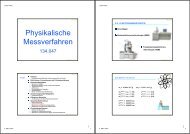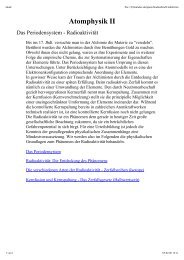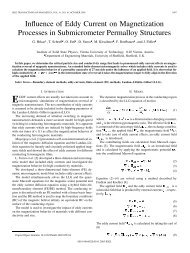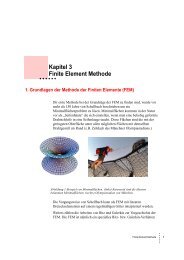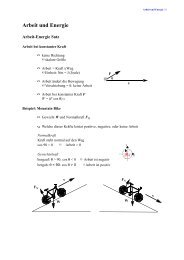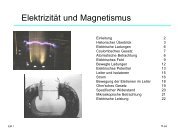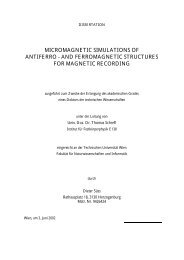Read Back Signals in Magnetic Recording - Research Group Fidler
Read Back Signals in Magnetic Recording - Research Group Fidler
Read Back Signals in Magnetic Recording - Research Group Fidler
Create successful ePaper yourself
Turn your PDF publications into a flip-book with our unique Google optimized e-Paper software.
<strong>Read</strong> Head Design<br />
In presence of shields with high permeability the free layer sees an additional mirror current,<br />
which must also be considered, especially for small gap distances. These mirror currents<br />
reduce the current field as shown <strong>in</strong> Figure 5.4.<br />
5.1.6 Crystall<strong>in</strong>e Anisotropy<br />
Similar to the shape anisotropy the crystall<strong>in</strong>e anisotropy can be used for bias<strong>in</strong>g. For<br />
example a field cool<strong>in</strong>g treatment of a material can generate an <strong>in</strong>tr<strong>in</strong>sic anisotropy.<br />
Nevertheless this bias scheme is not often used <strong>in</strong> GMR sensors, because the free layer should<br />
be able to rotate freely and the p<strong>in</strong>ned layer is normally biased by exchange anisotropy.<br />
5.2 Shield<strong>in</strong>g<br />
To avoid <strong>in</strong>fluence of external fields and neighbor<strong>in</strong>g bit transitions, shields with high<br />
permeability enclose the GMR element. Shields normally consist of Permalloy (Ni80Fe20).<br />
The relative permeability of Permalloy is <strong>in</strong> the order of<br />
4<br />
10 .<br />
The gap distance between both shields is limited to 60 nm for CIP sp<strong>in</strong> valves and 20 nm for<br />
CPP sp<strong>in</strong> valves (see Section 2.8.3). In order to have an improvement of the read back signal<br />
the gap distance should not exceed the bit length.<br />
5.3 Thermal Stability<br />
The sense current leads to a heat<strong>in</strong>g of the GMR element. The properties of the GMR sensor<br />
are temperature dependent. For <strong>in</strong>stance the exchange bias field decreases with temperature<br />
(see Figure 5.2). Moreover the noise <strong>in</strong>creases. To achieve thermal stability a constant sens<strong>in</strong>g<br />
current is applied <strong>in</strong>stead of a constant voltage. Then the change <strong>in</strong> resistance is determ<strong>in</strong>ed<br />
by measur<strong>in</strong>g the change <strong>in</strong> voltage. The heat production of the current limits the current<br />
density. The heat dissipation is especially a problem for GMR sensors work<strong>in</strong>g <strong>in</strong> CIP mode,<br />
because for the CPP mode the shields are used as leads. Therefore the electric conductance<br />
between GMR sensor and shields is larger, which normally also leads to a larger thermal<br />
conductance due to the Wiedemann-Franz Law.<br />
64



